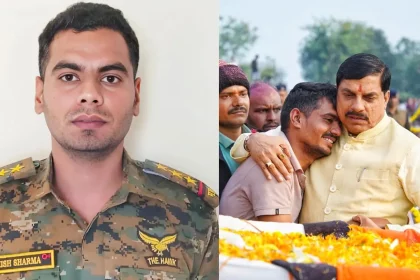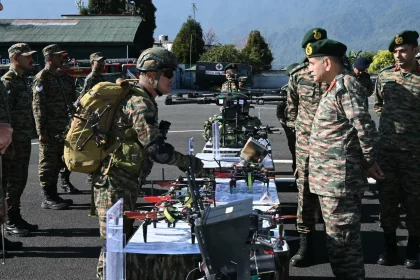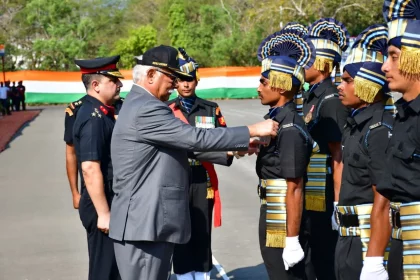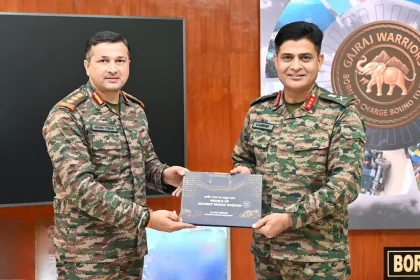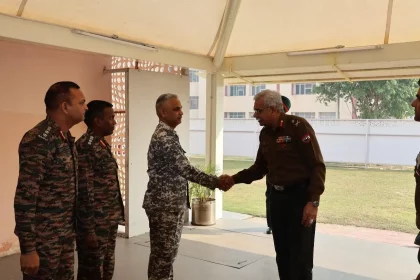Hawk Force Inspector Ashish Sharma Martyred in Anti-Naxal Operation
Bhopal/Rajnandgaon, November 20, 2025 – Inspector Ashish Sharma, a distinguished officer of the Madhya Pradesh Police's elite anti-Naxal unit known…
Indian Army Secures IPR for New Coat Combat (Digital Print) Design
With full ownership of the new camouflage and coat design, the Indian Army continues to strengthen its technological edge while…
General Upendra Dwivedi Visits Black Cat Division in Sikkim
Such interactions serve to reinforce the bond between the Army leadership and soldiers deployed in forward areas, fostering a culture…
Agniveers of Corps of Signals Complete Training at Passing Out Parade in Goa
This successful parade marks another milestone in strengthening the Indian Army's signals and communication capabilities through the integration of young,…
HDMC-21 Officers Visit Gajraj Corps for Operational and Logistics Briefing
Lt Gen Gambhir Singh shares insights on current security landscape and future operational contours.
HDMC Officers Visit Vajra Corps for Insight into Integrated Operations
Maj Gen Atul Bhadauria stresses rapid tech absorption and agility in meeting emerging security challenges.

